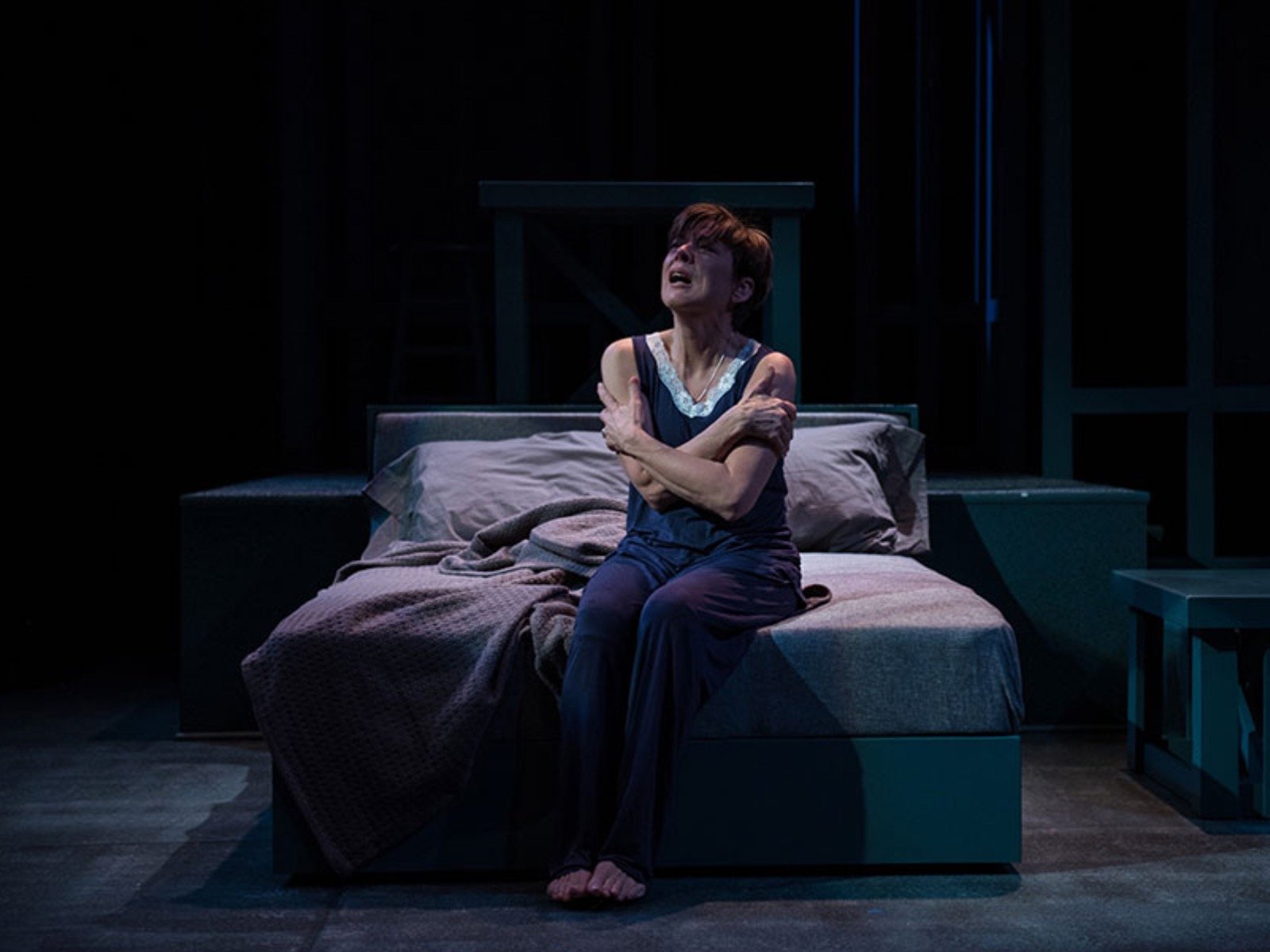"A Small Fire" is aptly named.
Running through Feb. 23 at Next Act Theatre, it is a small story of one woman’s life that has been pared down to three things: her work running a tight, no-nonsense construction site while yucking it up with the guys in hardhats; her husband of several decades, John (Jonathan Smoots), a gentle soul whose softness doesn’t interest her much; and her 20-something daughter Jenny (Emily Vitrano), a bright, successful young woman who is about to get married, even though mom has made her critical thoughts on the groom very clear.
As David Cessarini states in his director’s notes, the script by Adam Bock is spare. Much of the action of the play is meant to happen in the silences between fairly mundane conversations. Rather than a play, "A Small Fire" feels like a character study, asking the question, "How does a person, who is always in complete control of her situations, respond when her abilities to function normally are stripped away one at a time?"
Watching the downward spiral of Emily Bridges (Mary MacDonald Kerr) has been compared to coping with a loved one’s long slide into dementia: As she slips further away from her family and friends, they are also changed by the experience. But although the stakes in this piece are high, the impact of the play is small. It is contemplative instead of heart-wrenching, perhaps because the main character is hard for her family to love and ultimately hard for the audience to like.
As Emily, Kerr begins the play yelling over the sound of heavy machinery, swearing at her contractors and suppliers, and managing work crews so they can be more efficient. She tries to delegate to her jovial, salt of the earth, right hand man Billy Fountaine (Mark Corkins), but often ends up stepping in herself, bringing her work home with her via her Blackberry. And it’s clear that Emily is the type who wants what she wants. More autonomy. More wine. More freedom to speak her mind about how ill-advised it is for her daughter to be rushing in to marriage. Her only gentle moments arrive too late – when she can no longer express them.
The simple set, designed by Rick Rasmussen and David Cecsarini, underlines how one-note Emily’s life has become. The framed up walls made of naked gray beams, construction grade tan carpeting, and industrial strength, utilitarian set pieces are generic and unfinished. Even her mother-of-the-bride dress is cement gray, in contrast to the bright coral flowers that her daughter Jenny has selected.
If Emily was planning on filling in those walls and adding a color to her world "later," she never gets the chance. Her most basic senses fail her, until she is only able to communicate with the outside world through touch. Kerr does a nice job of subtlely communicating her growing fear and panic in each progressive scene, as she copes with one loss after another. In her face, we can see the moment when everything goes black, and again when everything goes silent. Pre-recorded monologues let us inside Emily’s head and her dreams, while those around her are increasingly unable to get messages through.
Smoots does what he can with John, the father and husband role. A pushover who has been ruled by Emily’s whims and hurt by her emotional barbs for years, he is lost without his wife’s normally strong presence. In an interesting twist, when he tries to step up as her caregiver, he personally begins to appreciate everyday sights, sounds and smells even more. But he starts and ends the story as a sad-eyed puppy, wishing he was loved or even appreciated by his demanding spouse.
Similarly, Vitrano brings as many facets to the daughter, Jenny, as she can. But the underwritten role pigeonholes her as a resentful child who believes her father would be better off without her vitriolic mom. As a result, she can’t find a civil way to interact with Emily as she was, or in her debilitated state. Hope for reconciliation for mother and daughter was initially slim, and it was gone by the play’s end.
The biggest surprise, and one of the most touching scenes in the play, involves Corkins’s construction foreman Billy. For a secondary character, the playwright has showered him with colorful speech and personality quirks which involve breeding and racing pigeons. (Who knew?) Billy also has an unexpectedly poignant story about watching a loved one die, and for the loudest, most uncouth guy onstage, he exhibits the most nuanced understanding of the Bridges family’s situation. Corkins does a nice job playing both ends of the surprisingly large spectrum of this man, although his wobbly New York accent feels out of place.
In an affecting final scene between husband and wife, Jessica Lanius’s graceful choreography illustrates the last way that Emily and John can find to communicate with one another: physically. Stylistically it’s a big departure from the rest of the play, but it’s a beautiful translation of a tender moment.







